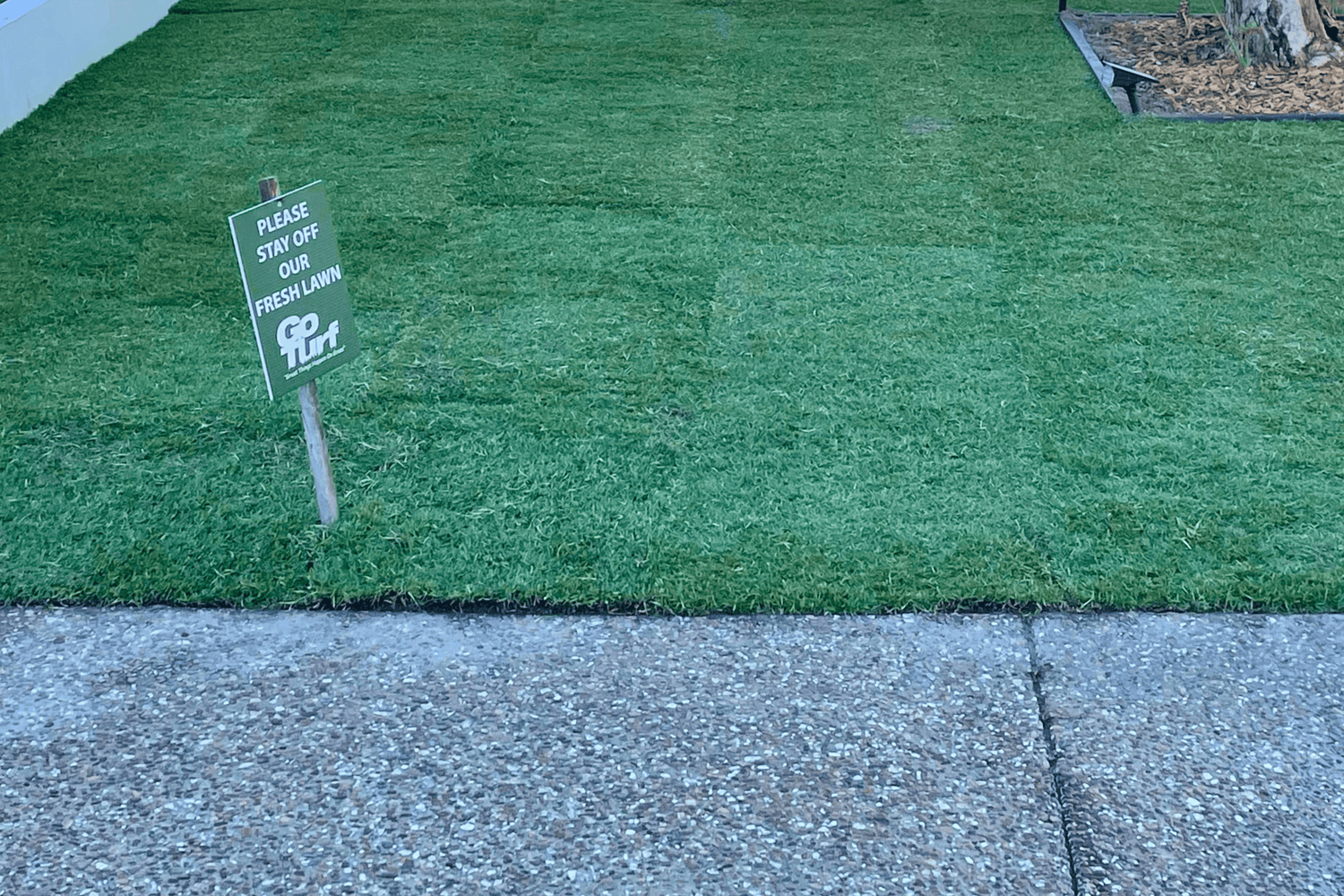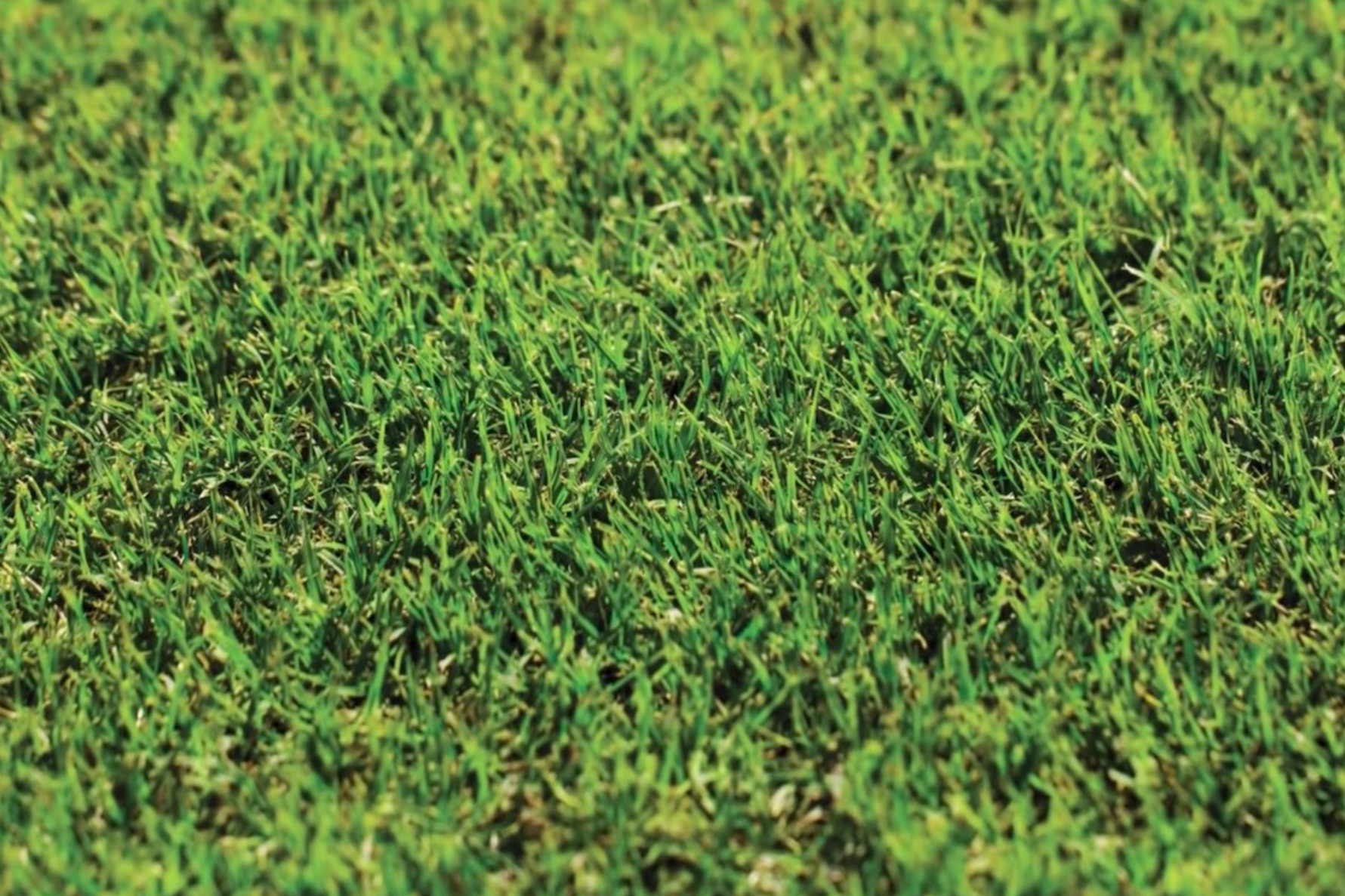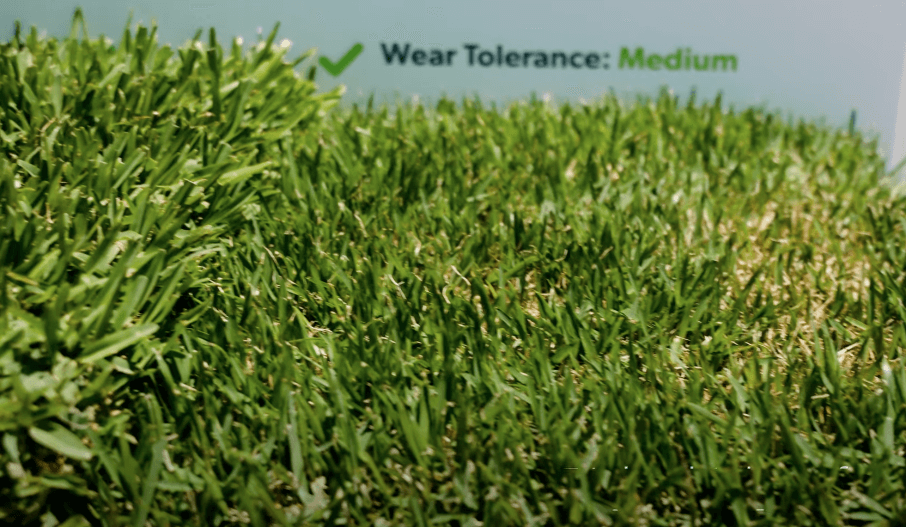What do we love to see at GoTurf? You giving your new home the grand yard it deserves. But before you go rolling down that green carpet entrance to your home, we have some housekeeping to do.
Today, we're sharing everything you need to know about adding turf into the mix of your home renovations or new home building journey, including the ins and outs of installation, caring for your new lawn, and most importantly, precisely how to time your lawn installation with your home renovation for the best yard on the block.
Side note: To be clear, we're not talking about lawn renovation; that's a different thing entirely, and we can touch on that another day.
The Golden Rule: Lawn Goes LAST
Now we love all the trades and work with them all the time. But when it comes to laying new lawn, we don't want to see them. In fact, we want them to be long gone. Out of sight, with grass being the very last thing to be on site.
We mean to say that your home renovation or new home build should be finished before your turf slabs touch down on your property. Why? Because if there's one thing you take away from this article, let it be this: you can't go walking all over a new lawn, let alone bring heavy equipment through it.
Beyond the house itself, please complete your other landscaping work first, including:
-
Retaining walls
-
Garden edging
-
Paths and driveways
-
Pool installation
-
Deck construction
-
Fence installation
Seriously, Stay Off the New Turf
There's nothing worse than laying down thousands of dollars' worth of premium turf just for it to perish. Your new lawn is delicate and precious. Until those roots go down, your turf will be stressed out and can't handle any foot traffic. So we need to keep ALL traffic off your new lawn until those roots are well and truly established.
Even a brisk walk can damage the root system and cause undulations in the soil. Undulations are unevenness in the lawn surface, and they'll manifest as dips and hollows once the turf settles. Walking on the turf also compresses the soil, which makes it difficult for roots to establish.
The first few weeks are crucial for lawn establishment. So, let's minimise traffic during this time and allow those roots to attach to the soil firmly.
Soil Requirements for Different Turf Types
Now, not preparing your yard properly is one of the most common mistakes we see new homeowners and renovators make. We need the right soil, good quality fertiliser, and no weeds or existing grasses present. We've gone into more detail in our comprehensive preparation guide, so if you need to brush up, you can review the whole process there.
Soil Preferences by Turf Type
Adaptable to Most Soils:
-
Sir Walter DNA Certified Buffalo
-
Nullarbor Couch
Prefer Sandy Loam Mix (80% sand / 20% loam):
-
Zoysia Sir Grange
-
Zoysia Australis
-
TifTuf Hybrid Bermuda
Best Season to Install a New Lawn in South East Queensland
We can't speak for the world, or even all of Australia. What we know how to do (and do it exceptionally well) is grow grass for South East Queensland, specifically, warm-season grasses. And in South East Queensland, anytime is a good time to lay turf.
Sure, each season has its pros and cons:
-
Summer: Higher risk of heat stress, but faster establishment
-
Winter: Slower establishment period, but less intensive watering
-
Spring/Autumn: Easy conditions all around
So, you don't need to sit and twiddle your thumbs waiting for the perfect season. You can get that turf in the ground whenever you're ready (provided you didn't skip any of our earlier preparation steps).
How to Install Your New Lawn During Renovation
Timing Is Everything
For optimal results, please arrange for your new lawn to be laid immediately after delivery, or lay it yourself straight away.
Going Down a Slippery Slope
When laying turf on a slope, start at the bottom and work upward to avoid damaging newly laid turf.
Staggering to Backyard Victory
Create a staggered brick pattern, using a string line or yard edge to ensure straight, professional-looking lines.
Mind the Gap
Avoid gaps between turf slabs, which can cause issues during mowing. Cut turf as needed using a sharp shovel or serrated knife, and save those scrap pieces to fill gaps later (we mean large pieces, small pieces dry out too quickly.)
Roll Over for Success
Once you have the turf down, roll it with a lawn roller to ensure the roots make proper contact with the soil and create a smooth, even surface.Many people skip this step, but it's an important one.
DIY or Professional Installation?
Whether you opt for a DIY job or hire professionals is entirely your call, but there's one thing in particular you should consider: the weight of a slab.
Turf slabs are heavy, and they can range from 30mm to 50mm in thickness. We keep as much of the root intact as possible to ensure good establishment, which means laying them isn't light work. If you'd prefer expert help, learn all about our preparation and installation services
New Lawn Care After Installation
Beyond staying off the turf, there are three main priorities you need to remember: watering, mowing, and fertilising.
1) Do NOT Let Your Lawn Dry Out
This is the most critical factor. Your lawn will be thirsty and require frequent watering while the roots establish themselves in the soil. Only after the roots have grown deep can you ease off.
For the first few days after installation, please ensure you're watering deeply enough that the roots aren't drying out. We're not talking surface-level sprinkling here, but getting down to those roots.
A watering schedule guide:
-
Frequency: Once in the early morning and once in the late afternoon
-
Duration: About 25 minutes each session, more if it's particularly hot weather, less if it's been raining heavily
After the first two weeks, you should be able to reduce watering to once every two days. Unless it's a scorcher, then maintain daily watering.
Pro tip: This is where quality preparation pays off. If we've prepped your lawn or you've followed our advice, you'll have under-lawn fertiliser with water crystals between the soil and roots, keeping moisture exactly where it should be. That's our Under-Lawn fertiliser or Lawn Solutions Australia Lawn Launcher.
2) Do NOT Mow Before Roots are Established
Your new lawn is ready for its first mow once the roots have established. You can test this by seeing if you can lift a corner of the turf; if it doesn't lift from the ground, it's ready to mow (usually 2-4 weeks).
First mow guidelines: Raise your mower to its highest setting and remove only the very tips of grass blades to avoid stressing the grass.
3) Do NOT Forget Fertiliser
Once the lawn has been down for 6-8 weeks, it's ready for its first fertiliser application. Always water thoroughly after applying fertiliser.
What to Avoid During Establishment
Skip herbicides: While your new lawn is establishing, hold off on using weed killers. If weeds appear, pull them out by hand.
Minimise all traffic: Keep all foot traffic to a minimum during establishment. Keep pets, kids, and trades off the area until roots are well established.
Common Turf Mistakes to Avoid
-
Walking on new turf damages root systems and creates uneven surfaces
-
Inadequate soil preparation leads to poor establishment and patchy growth
-
Surface watering only as roots need moisture to establish properly
-
Mowing too early or too low stresses the grass during the critical establishment period
-
Applying herbicides too soon can damage new grass
A Typical Timeline: What to Expect
-
Week 1-2: Daily care, twice-daily watering, absolutely no traffic
-
Week 2-4: Roots establishing, reduce watering frequency, check if it's ready for the first mow
-
Week 4-6: Lawn becoming more resilient, light foot traffic possible
-
Week 6-8: Ready for fertiliser application
-
Week 8+: Normal lawn care routine can begin
Frequently Asked Questions
Q: Can I install turf in summer in South East Queensland?
A: Yes, Summer installation means faster establishment, though you'll need to water more frequently.
Q: How long before I can walk on my new lawn?
A: Please wait until roots have established (usually 2-3 weeks). Test by trying to lift a corner; if it doesn't lift easily, then light foot traffic is okay.
Q: What if it rains heavily after installation?
A: Heavy rain can help with establishment. Adjust your watering schedule accordingly.
Your Path to the Perfect Lawn
It might sound like a lot, but it's pretty simple. If you prep right, lay right, and water right, then you'll enjoy it, alright. With some patience and proper timing, you'll have a thriving lawn and a beautiful new or freshly renovated home. As long as the lawn goes last, you'll protect your investment and ensure your new turf becomes the beautiful, durable lawn your home deserves.
Ready to Get Started?
If you have any questions about timing your lawn installation with your home renovation, give us a call on 1300 781 175 or visit us at Unit 57/109 Leitchs Rd, Brendale QLD 4500.
Related Resources:
Organise your prep and lay






Leave a comment
This site is protected by hCaptcha and the hCaptcha Privacy Policy and Terms of Service apply.